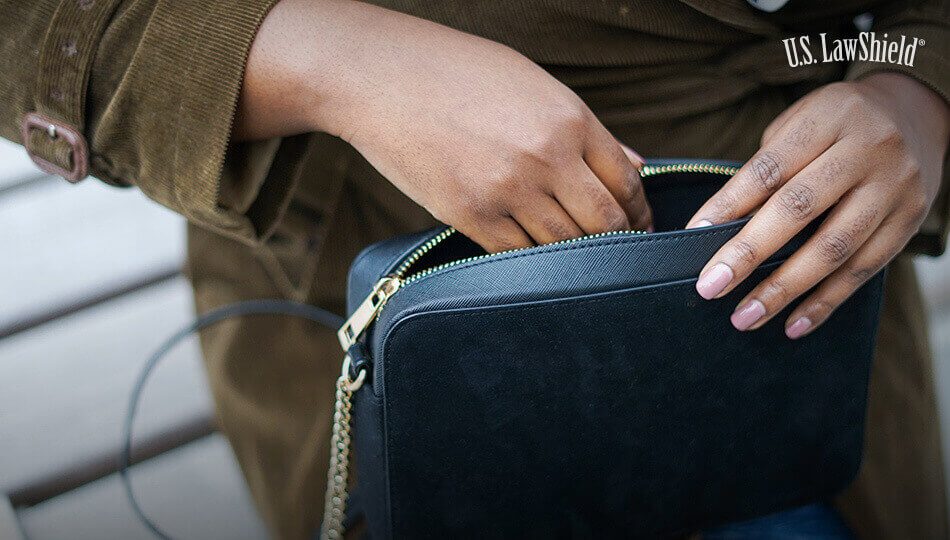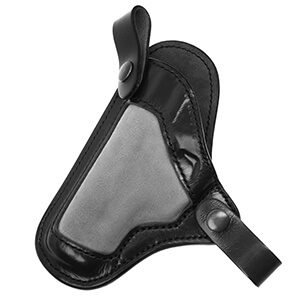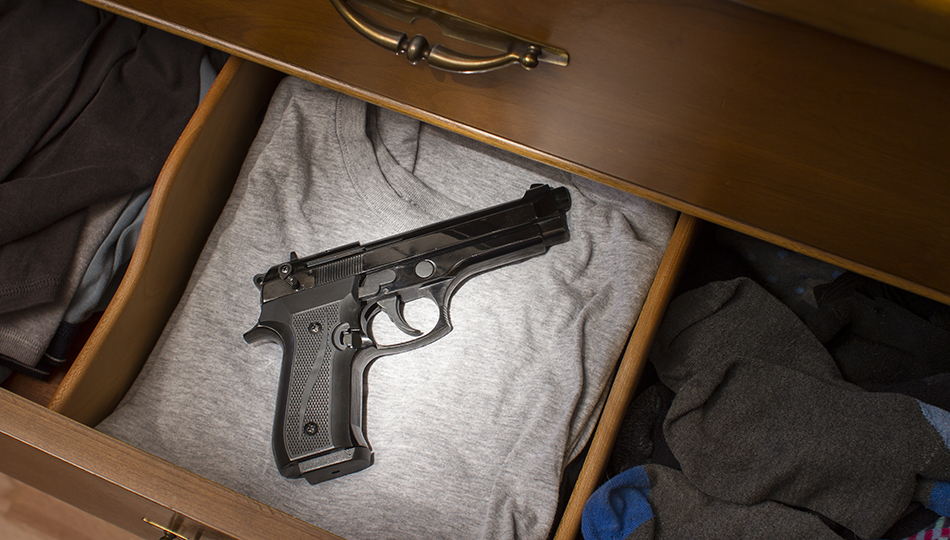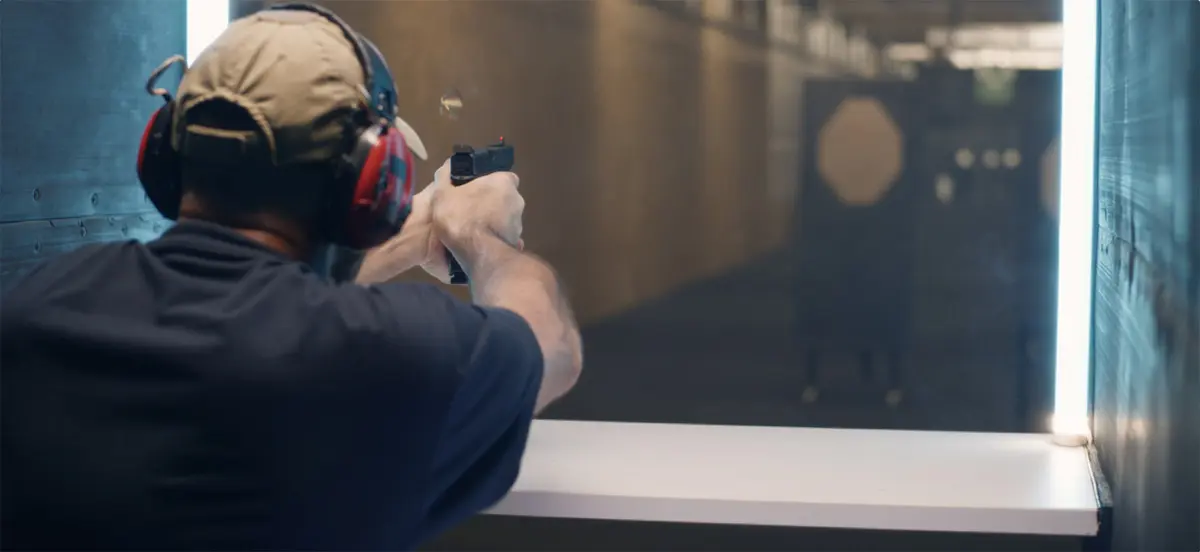
How to Choose Your Top Gun from the Best Concealed Carry Handguns
If you’re reading this, you’ve probably at least considered the legal concealed carry of a pistol as an option for self-defense. More than ever, people are turning to concealed carry guns to protect themselves, and as a result, carry gun manufacturers continuously develop and produce handguns specifically for this market.
Not only are well-known gun manufacturers developing new handguns specifically for concealed carry, but new gun makers are getting into the game as well. Perhaps most noticeably, there are a surprising number of Turkish models of concealed carry pistols available today, many of which have an impressive array of features one might expect from a current generation concealed carry handgun from more established gun brands. Accessories like lights and holsters can sometimes be difficult to source for them, but every new model improves on that, and the more people that buy them, the more holsters and lights will become available.
With the wide array of potential gun choices and reviews (you can find good reviews for almost all of them, and many have social media groups for users with a high level of fandom), how do you sift through all the available information regarding the best gun makes, models, cost points, options, and design choices, to learn which of the top concealed carry guns would make a great concealed carry pistol for you? Give yourself some time to research and make a list, as you’re going to find many popular concealed carry gun options, but hopefully, this article will help you screen out the so-called “carry gun guns” from those less suited to carrying concealed. Keep in mind that internet searches can bring up seemingly nonsensical phrases like “guns ammo handguns,” but keep searching! Please let us know if you found this article helpful and if you choose your carry pistol through a similar process.
Let’s Define “Best Concealed Carry Guns”
When considering what makes the best concealed carry handguns just that—the best, specifically for concealed carry purposes, we can say right off the bat that a handgun built on what would normally be a rifle platform isn’t one that’s likely to be at the top of the list. That sort of gun may be a good fit for a home-defense pistol, or maybe one to keep in the truck when you hit the backcountry, but we’re focusing on standard-frame handgun designs, be they steel or polymer, semi-auto, or revolver. While pistol-sized rifles can be excellent for self-defense, hunting, or hitting a target beyond normal pistol range, they aren’t a common focus for concealed carry, due to weight and length if nothing else, which puts them outside what one might call a “best” pistol for concealed carry. Even with a brace that can collapse, you’re still looking at a challenging carry situation, and the inches and oz you save with a less bulky gun puts them far ahead as the best guns for concealment and daily carry outside the home, AM to PM.
From there, we can look at gun size and weight. While it’s possible to conceal a large frame, eight-shot revolver with a barrel length of 6 inches or more, or something like a Desert Eagle, concealed carry with one is going to be unnecessarily difficult, and potentially uncomfortable to do for extended periods.
While a pistol’s size and weight won’t make it impossible to use as a carry gun, the vast array of specific concealed carry pistols available can offer you most of the features you will find in larger pistols not dedicated to concealed carry. Today, the list of concealed carry choices is quite large. As guns go, those are both big chunks of metal, and even if you forego carrying in an IWB (In Waist Band) holster and carry in a shoulder holster instead to make the barrel length less of an issue, the weight may make one a less accessible choice. This also assumes you can find concealed carry holsters for such an unusually large carry gun.
That isn’t to say that a derringer or tiny subcompact with little in the way of magazine capacity is necessarily the way to go either. Carrying a gun like that has its place, and people certainly do choose concealed carry guns like that all the time, but it’s entirely possible to find a happy medium that leaves you both comfortable and adequately protected should you need your carry pistol.
Excluding the very largest and smallest of gun options leave quite a bit to sort through. While it’s possible to comfortably carry something fairly large, like a Glock 34, it’s not something one generally starts out looking to do, and it requires a lot more effort to keep concealed successfully and comfortably. From here on out, we’ll assume then that we’re talking about the class of subcompact to compact pistols designed or readily adapted to perform best as concealed carry handguns.
Hammer and Frame Options for a Concealed Carry Gun
Perhaps the only gun debates more common and rage-inducing than .45 vs. 9mm, or AR vs. AK, are steel vs. polymer frame, and traditional double-action/single-action/single-action only (DA/SA/SAO) hammered pistol vs. double-action only (DAO) striker-fired gun.
We’ll start with the latter: How do you know if a pistol is one or the other? Well, if your carry pistol has an exposed hammer that you can cock or decock, then you don’t have a DAO striker-fired gun. If the hammer must be cocked before you can shoot it, like many 1911 designs, it’s single-action only (SAO). If you can cock the hammer and shoot by pulling the trigger, it’s DA/SA.
The difference between these hammer options on a gun is more about preference and what you are accustomed to using than it’s about which configuration makes for the best concealed carry guns. A shooter who spends enough time training with a new carry gun will be able to use any chosen gun configuration safely and effectively. This experience only comes with time and effort though, so if you have strong feelings or lots of experience with one variety of gun action, it’s suggested that you stick with it unless you’re sure you want to put the time in to learn a new handgun platform well enough to use it under stress without thinking about it.
Beyond the type of action and the presence or lack of a hammer, frame composition is another category to consider. Traditionally, handguns had all-metal construction. Examples include such venerable names as 1911, Sig P226, Browning Hi-Power, and Beretta M9. Starting in the late 20th century though, polymer became a durable enough option that major manufacturers either adopted or in the case of companies like Glock, went all-in on non-metallic frames.
The question then, is do you want a polymer-framed gun or an all-metal one? There are some in-between options, with an aluminum alloy frame, and a steel barrel and slide, (The CZ P-01 for instance) but those aren’t as common. There are pros and cons to both, so let’s take a look.
Steel-framed concealed carry guns will weigh more for their size, so a Commander model 1911 will weigh more than a similarly sized polymer-framed handgun model. This added weight may mean a more noticeable carry gun, but it also means less felt recoil. If recoil management is a top concern for you, and you don’t mind carrying a bit of extra mass on your belt, then this one might be higher on your list of priorities. Conversely, a polymer-framed gun comes with less weight, but that same lack of weight won’t absorb as much of the shock of recoil.
There’s also a case to be made for polymer regarding its durability and customization. Polymer gun parts don’t rust or corrode, and you can have a professional cut-away, or modify the texture of a polymer handgun frame, should you decide you want a lighter gun or one with a more aggressively textured grip. You can even do it yourself, though it’s recommended to have an extra frame on hand if you’ve never done it before.
In the end, both polymer and steel-frame guns have advantages and disadvantages, and it comes down to which ones work best for you and your needs. If you don’t feel every oz of your carry gun, like the classic look of metal, or just love the profile of an all-steel gun, then it sounds like a steel frame is the one for you. If instead, you look for personal custom-design options in a gun, minimal weight, and less risk of rust or corrosion in the frame, a polymer one might top your list of wants.
Enjoying this content? Find out how you can get more sent straight to your inbox.
A Revolver Can be One of Your Best Guns for Carry
Revolvers have indeed been largely displaced by semi-auto pistols, both metal and polymer framed, and for generally good reasons. They have less than half the capacity of a mid-size semi-auto pistol like a Glock 19 or CZ 75 compact, and they are slower and more difficult to reload unless you put in many hours of practice. Additionally, while a revolver doesn’t often malfunction, if it does, you’re likely to be carrying an awkward paperweight in a holster until a gunsmith can take a look at it.
It’s also true, however, that a quality model of wheel gun with a similar grade holster can provide enough personal protection capability for someone who knows their needs, and practices enough to be proficient with one.
A smaller frame revolver particularly shines in IWB or ankle-carry applications, as the short length and slimness of such a gun are hard to match no matter which model Glock or other semi-auto gun you might carry. They are available in a wide variety of calibers which, depending on your needs, can range from .22 to .454 Casull. Ammo capacity and the need for frequent and careful training of reloads are their weak point, but if you’re willing to put in the work, you may discover that a great concealed carry handgun can be much more than what you generally see people shooting at your local USPSA match. Finding a holster for one is generally fairly simple, and other aftermarket items for concealed carriers are also widely available.
A larger frame revolver can be more difficult to conceal, even if one comes with a shorter barrel length, and is probably not the best for any but a handful of applications but can also offer you a level of firepower that’s much more difficult to match with semi-auto handguns. Such guns are popular as backups for hunters, particularly in areas one is likely to encounter brown bears. If a hard-hitting, high-velocity pistol is on the top of your list of needs, you can often get it in a lighter, slimmer package with a revolver than you’ll find in a magazine-fed pistol from any maker, from Glock to SIG Sauer.
As for which revolver to choose, there’s a lot of variety in such pistols out there. The more well-known, established ones would be the place to start, while there are some radical new designs out there, we’re talking about concealed carry, not range toys, and proven reliability is paramount (as is proper training and education of course). Smith and Wesson (S&W) and Ruger are the two biggest names in the revolver game, and you’d be hard-pressed to go wrong with any of their offerings, which are available from tiny .22 pocket guns, to enormous, big game hunting pistols, and everything in between. Price tends to follow size and popularity, though when someone complains about the price, one reply is that there is a used market for quality handguns that often offer excellent value.
Top Semi-Auto Pistol of Carry Handguns: Thinking Beyond the Glock
Glock has indeed become something of the standard for modern handguns, and many people would answer the question of “which handgun is best for concealed carry” with the Glock 19. Much of this is because Glock, and particularly their mid-size 9mm offering, is the blank slate of the concealed carry world. It’s affordable, ubiquitous, performs well out of the box, and is highly customizable, but you don’t have to buy one no matter what the guys at the gun store counter say. If you want one with more or less barrel length, or one in any standard handgun caliber, and a few oddballs, Glock can do that, and there’s likely a holster and aftermarket gear to match. It’s not difficult to see why so many people answer the question of which is the best concealed carry gun with Glock; they make a great gun, but we’re here to tell you that the story doesn’t end there.
So, what else is there besides Glock? 1911s have been popular concealed carry guns for over a century, and plenty of people swear by them. There can be issues with some models feeding hollow points, and traditional models are usually limited to less than 10 rounds, but if you’re willing to spend more, there are manufacturers who have addressed these problems out of the box. If you want a venerable SAO or DA/SA design with a steel frame, there are certainly worse choices than a quality 1911 Commander-style, or full-sized model (like Glock, there are many length and grip size options), and the market for holster and gear options is robust
SIG Sauer makes a wide variety of popular concealed carry gun options, from the venerable P226 to the tiny P238, and all sorts of options in between. They have a longstanding reputation for reliability and addressing quality control issues as they become aware of them, and you can choose from steel and polymer frames, as well as striker and hammer-fired guns, each one with varying grip size and length choices. Their P365 line is designed explicitly for concealed carry and packs at least 11 rounds into a surprisingly small gun that’s definitely one to check out.
Smith and Wesson’s M&P line is comparable to Glock, but with grips that are somewhat more naturally shaped. Many people who have issues with Glock grips prefer the M&P’s more oval lines. The M&P is the Chevy to Glock’s Ford, and just like the car makers, they have fairly comparable offerings that fill the same niches and seem to perform equally well. If you like the idea of a Glock, but want something a little different, or that feels less like a building block in your hand, S&W might have what you’re looking for.
CZ is another company with a great reputation, especially among handgun competitors. Their CZ 75 series is based on the timeless Browning Hi-Power design, and if you like all-steel handguns with a classic vibe, with double-digit magazines of 9mm, .40, or .45, then you should check this Czech pistol maker out. They have gotten into the aluminum and polymer game in the last couple of decades too, and their P-01 and P-09 are worth including on your list, even if you don’t like the Browning derivatives CZ offers.
Best Concealed Carry Handguns
We’ve covered a lot of ground and talked about a lot of different gear options for gun, design choices, and needs, but at the end of the day, the answer to what makes the top concealed carry guns great comes with a few more questions. Try out this list to check as you look at your options.
To review, starting with the gun, take a look at the best concealed carry guns, and decide which action you want (SA/DA, SAO, or DAO), whether semi-auto or revolver, which size category, and the caliber you want in a handgun. If you’re going with a semi-automatic handgun, decide what you want the pistol frame to be made of. The barrel length and profile can be a factor here, as the longer and thicker a gun is, the more difficult it can be to carry comfortably. Many makers, especially Glock and SIG Sauer, have “families” of gun models that vary by frame size and barrel length, which helps in finding a perfect balance of barrel and grip dimensions, making it easy to choose one that’s best for you. Sometimes you can even mix and match barrel and frame size. A longer barrel can make shooting accurately easier, but if you can’t comfortably sit down, it may not qualify as your best carry pistol.
From there, you’ve got a general idea of what to look for, and the options for your best handgun for concealed carry should be sufficiently narrowed to make a difficult choice easier.
 Next, consider gear; if you’ve found one great gun for concealed carry, but nobody makes concealed carry holsters for it, or produces affordable magazines, sights, or optics, it doesn’t matter what anyone else says, you haven’t done yourself much of a service. Concealed carry holsters can be found online or in your local gun store, and you’ll have an easier time sourcing one if you choose a more common concealed carry gun. Holsters are a vital part of successful concealed carry, and if you have a tough time finding holsters for a given gun, this may be a clue about the potential quality of that gun. While that might not always be the case, as MSRP, barrel length, and general market share affect popularity as much as quality, it’s one decent rule of thumb.
Next, consider gear; if you’ve found one great gun for concealed carry, but nobody makes concealed carry holsters for it, or produces affordable magazines, sights, or optics, it doesn’t matter what anyone else says, you haven’t done yourself much of a service. Concealed carry holsters can be found online or in your local gun store, and you’ll have an easier time sourcing one if you choose a more common concealed carry gun. Holsters are a vital part of successful concealed carry, and if you have a tough time finding holsters for a given gun, this may be a clue about the potential quality of that gun. While that might not always be the case, as MSRP, barrel length, and general market share affect popularity as much as quality, it’s one decent rule of thumb.
Last, consider both your method of carry and what you’re expecting fom this pistol. Are you spending lots of time wearing a gun indoors, where you can easily and legally keep rifles or a shotgun nearby? If you are carrying in such a scenario, maybe check out a smaller revolver, or see if a pocket-sized semi-auto pistol is the carry pistol for you, as you may just need it to make sure you can get to your other, more powerful gun. Are you in a vehicle all day, or maybe doing physical labor outdoors? Your needs will be different. Wearing a suit or coveralls, at home or on the road, numerous factors determine the right gun or holsters for you and your needs. Be sure to explore all of your options, keep price and quality in mind, buy used if you have to, and you should be on your way to finding the best carry pistol for your personal concealed carry needs. Above all, no matter what you wind up carrying, carry when you legally can, get the training you need, and be safe!
Concealed Carry Pistol FAQ’s
Your Protection Starts Here!
The information provided in this publication is intended to provide general information to individuals and is not legal advice. The information included in this publication may not be quoted or referred to in any other publication without the prior written consent of U.S. LawShield, to be given or withheld at our discretion. The information is not a substitute for, and does not replace the advice or representation of a licensed attorney. We strive to ensure the information included in this publication is accurate and current, however, no claim is made to the accuracy of the information and we are not responsible for any consequences that may result from the use of information in this publication. The use of this publication does not create an attorney-client relationship between U.S. LawShield, any independent program attorney, and any individual.





Leave A Comment